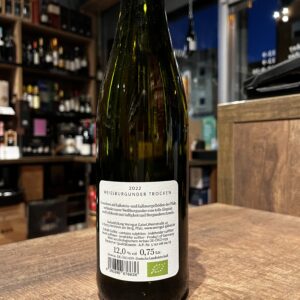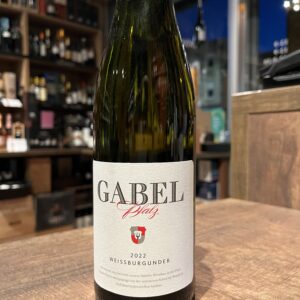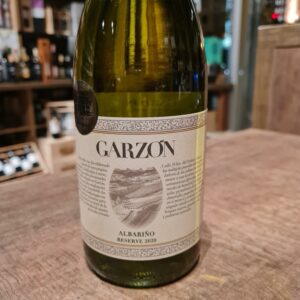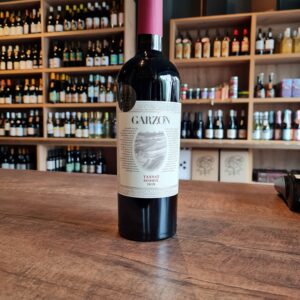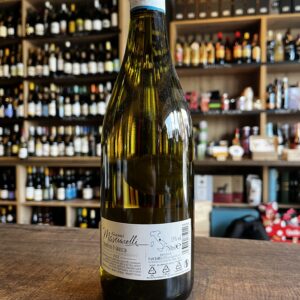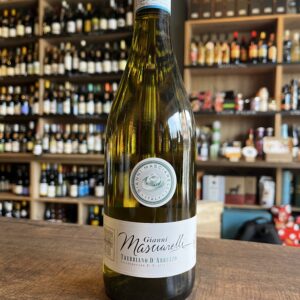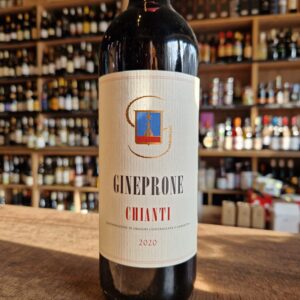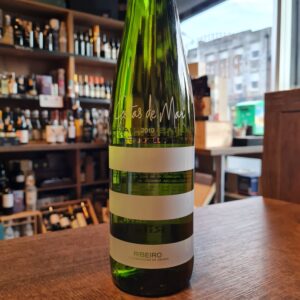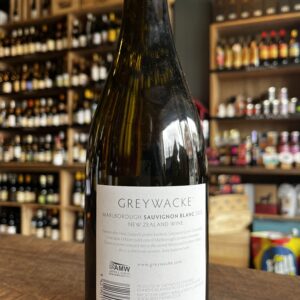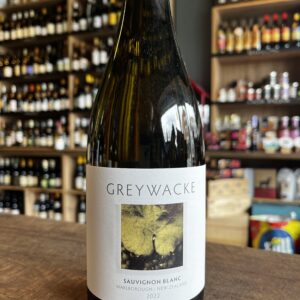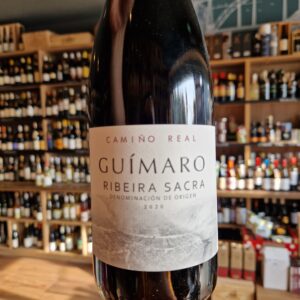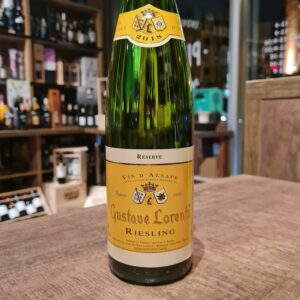-
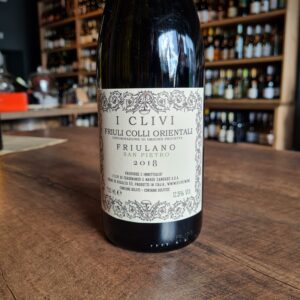 The wines of i Clivi are born in Friuli in between the Collio Goriziano and the eastern hills of Udine, named Colli Orientali, where, on sunny slopes – clivi meaning “slopes” – Altogether there is cultivated 12 hectares of certified organic vineyards planted with the indigenous varieties Ribolla, Friulano, Verduzzo, and Malvasia, whose only international grape is Merlot, a variety which found home in this area more than a century ago. Taking care of this important heritage of old vines, aged between 60 and 80 years, it is for Ferdinando and Mario Zanusso a reminder of the responsibility with which they guard and produce wine on this strip of land, giving the chance to express two distinct D.O.C. denominations, Collio, and Colli Orientali del Friuli, whose sensory difference is related exclusively to the microclimate. The low yields produced by these old vines give a natural concentration and complexity to the fruit they seek to transform naturally with spontaneous fermentation, maintaining the elegance and aromatic integrity through careful maturation in steel tanks for 50,000 bottles of varietal wines with great personality, distinguished grace, and delicacy.
The wines of i Clivi are born in Friuli in between the Collio Goriziano and the eastern hills of Udine, named Colli Orientali, where, on sunny slopes – clivi meaning “slopes” – Altogether there is cultivated 12 hectares of certified organic vineyards planted with the indigenous varieties Ribolla, Friulano, Verduzzo, and Malvasia, whose only international grape is Merlot, a variety which found home in this area more than a century ago. Taking care of this important heritage of old vines, aged between 60 and 80 years, it is for Ferdinando and Mario Zanusso a reminder of the responsibility with which they guard and produce wine on this strip of land, giving the chance to express two distinct D.O.C. denominations, Collio, and Colli Orientali del Friuli, whose sensory difference is related exclusively to the microclimate. The low yields produced by these old vines give a natural concentration and complexity to the fruit they seek to transform naturally with spontaneous fermentation, maintaining the elegance and aromatic integrity through careful maturation in steel tanks for 50,000 bottles of varietal wines with great personality, distinguished grace, and delicacy. -
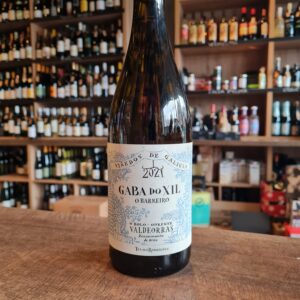 This slinky, mineral white hails from Valdeorras (“Valley of Gold”) in eastern Galicia, a region once famous for goldmining and now best known for its unique and complex wines made from the indigenous Godello grape. The wine is named for the river Sil that flows through the region (Xil is its ancient name, used by the Celtic people who once inhabited the area). Many of the river’s tributaries are flanked on either side by vineyards, planted in terraces on steep slate hillsides. The label displays a dozen bridges, symbolizing the idea of crossing from one vineyard plot to another. Gaba do Xil Godello is produced partially from grapes that are partially estate-grown and partially sourced from long-term suppliers. They come from 4 plots (O Val Grande, O Rasedo, A Torgueira, and O Valverde) located near the Bibei tributary, close to the town of Santa Cruz. Dotted with chestnut trees mixed with rockrose, the old granitic terraces barely have enough space to squeeze in the odd row of vines, following the folds of the mountains that plunge into the river. The vines grow in shallow, stony granite soils on terraces facing south, west and northwest. These coarse soils are low fertility and have low water retention capacity, forcing the vines to struggle and limiting yields. This Godello, is unoaked, gentle, restrained and precise which is dry and soft with a touch of godello's distinctive minerally citrus fruit, absoloutly perfect with light sea food dishes. Excellent value
This slinky, mineral white hails from Valdeorras (“Valley of Gold”) in eastern Galicia, a region once famous for goldmining and now best known for its unique and complex wines made from the indigenous Godello grape. The wine is named for the river Sil that flows through the region (Xil is its ancient name, used by the Celtic people who once inhabited the area). Many of the river’s tributaries are flanked on either side by vineyards, planted in terraces on steep slate hillsides. The label displays a dozen bridges, symbolizing the idea of crossing from one vineyard plot to another. Gaba do Xil Godello is produced partially from grapes that are partially estate-grown and partially sourced from long-term suppliers. They come from 4 plots (O Val Grande, O Rasedo, A Torgueira, and O Valverde) located near the Bibei tributary, close to the town of Santa Cruz. Dotted with chestnut trees mixed with rockrose, the old granitic terraces barely have enough space to squeeze in the odd row of vines, following the folds of the mountains that plunge into the river. The vines grow in shallow, stony granite soils on terraces facing south, west and northwest. These coarse soils are low fertility and have low water retention capacity, forcing the vines to struggle and limiting yields. This Godello, is unoaked, gentle, restrained and precise which is dry and soft with a touch of godello's distinctive minerally citrus fruit, absoloutly perfect with light sea food dishes. Excellent value -
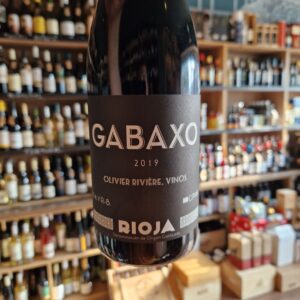
Rioja Gabaxo Olivier Riviere Biodynamic Wine, Wild yeast, French oak Maturation, full bodied but beautifully fresh and balanced. No new oak in Gabacho, but loads of classy Rioja character and sheer drinkability! Gabacho does see some wood, a small amount of old french barrels are used for ageing up to a year. This adds no flavour but helps to soften the wine slightly. This really is lovely stuff, rich but very fresh and balanced red wine with a touch of the dark and brooding about it and a touch of the animal too. It benefits from decanting and also from good bottle ageing. Try it, it will change your mind about Rioja
-
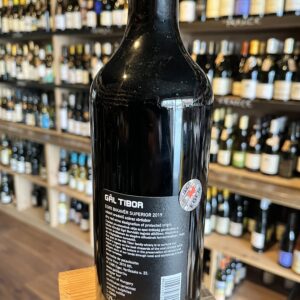
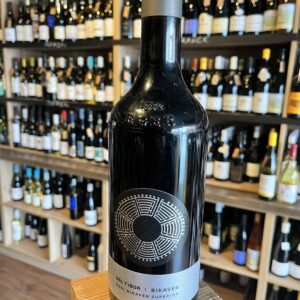 The 1552 Siege of Eger became an emblem of Hungarian heroism when the castle was successfully defended against the united forces of the two greatest Ottoman troops. When accounted for the defeat of their 20-fold army, the Ottoman leaders claimed the Hungarians - including women - fought with such an unparalleled courage they must have had drank the bull’s blood. This gave the name to the region’s emblematic red blend, Egri Bikavér (bull’s blood of Eger). Every bottle is embossed with “1552 Eger". This wine is the truest representation of the legendary Egri Bikavér. Cool climate, volcanic soil with the combination of the best sites in Eger give rise to the fresh, spicy, ripe, vibrant fruits with a touch of leafiness from firm but well integrated, round tannins. Let it explode untamed out of a slightly chilled bottle. The founder of the winery, Tibor Gál was asked by none other than Ludovico Antinori himself to join Ornellaia in 1989 where he soon became the chief winemaker. One of his greatest achievements was the 1998 Ornellaia which was voted best wine in the world by Wine Spectator in 2001. Meanwhile Marchese Incisa della Rocchetta, the man behind Sassicaia, partnered with Gál and together they founded their winery in Eger. Tibor Gál jnr. is in charge today with no less talent. His Bikavér blends are the most honest representations of the volcanic terroir of Eger. Vibrancy, elegance and finesse define the identity of all his wines. I am sure his dad would have been extremely proud to have seen his son become the pioneer of a new era of Egri Bikavér.
The 1552 Siege of Eger became an emblem of Hungarian heroism when the castle was successfully defended against the united forces of the two greatest Ottoman troops. When accounted for the defeat of their 20-fold army, the Ottoman leaders claimed the Hungarians - including women - fought with such an unparalleled courage they must have had drank the bull’s blood. This gave the name to the region’s emblematic red blend, Egri Bikavér (bull’s blood of Eger). Every bottle is embossed with “1552 Eger". This wine is the truest representation of the legendary Egri Bikavér. Cool climate, volcanic soil with the combination of the best sites in Eger give rise to the fresh, spicy, ripe, vibrant fruits with a touch of leafiness from firm but well integrated, round tannins. Let it explode untamed out of a slightly chilled bottle. The founder of the winery, Tibor Gál was asked by none other than Ludovico Antinori himself to join Ornellaia in 1989 where he soon became the chief winemaker. One of his greatest achievements was the 1998 Ornellaia which was voted best wine in the world by Wine Spectator in 2001. Meanwhile Marchese Incisa della Rocchetta, the man behind Sassicaia, partnered with Gál and together they founded their winery in Eger. Tibor Gál jnr. is in charge today with no less talent. His Bikavér blends are the most honest representations of the volcanic terroir of Eger. Vibrancy, elegance and finesse define the identity of all his wines. I am sure his dad would have been extremely proud to have seen his son become the pioneer of a new era of Egri Bikavér. -
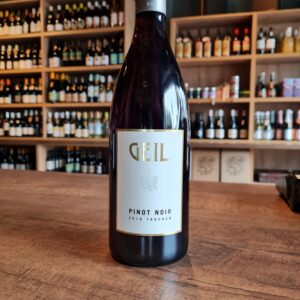 Weingut J. Geil is a winery making approachable, quaffable wines, all along the lines of greatly respecting the nature. This reflects in quality of their fruit and subsequently in their wines. Awarded many trophies each year, Weingut Geil belongs among some of the top German producers. There is nothing to be take lightly about their Pinot Noir, a serious, serious wine. Beautifully earthy and soft, with plenty of ripe wild berries. Excellent balance and considerable length. Accessible and juicy, yet wholeheartedly deep genuinely expressing the terroir of Bechtheim
Weingut J. Geil is a winery making approachable, quaffable wines, all along the lines of greatly respecting the nature. This reflects in quality of their fruit and subsequently in their wines. Awarded many trophies each year, Weingut Geil belongs among some of the top German producers. There is nothing to be take lightly about their Pinot Noir, a serious, serious wine. Beautifully earthy and soft, with plenty of ripe wild berries. Excellent balance and considerable length. Accessible and juicy, yet wholeheartedly deep genuinely expressing the terroir of Bechtheim -
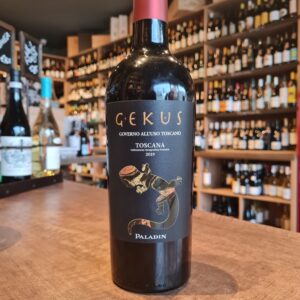 There are many ways in which to fall in love with Tuscany, not the least of which is through the region’s wonderful wines—or its landscape, its people, its food, and its art. Paladin's example of Super Tuscan wines comes in this form. A local take on the classic Bordeaux-style blend of Cabernet Sauvignon, Merlot, and Syrah (and sometimes Cabernet Franc), these wines were developed, in part, as a reaction to the restrictive regulations in Tuscany during the 1970s. At the time they emerged, they were considered some of the region’s best reds. Yet, somewhat ironically, they were technically table wine. In 1994, their Vino da Tavola (VdT) status was elevated to the Indicazione Geografica Tipica (IGT) denomination, which officially endowed these non-traditional wines with a premium quality rating just below the Denominazione di Origine Controllata (DOC), which at that time was reserved for more traditional regional wines. The tonneau used at Paladin hold 2 to 3,000 litters. Very impressive if you compare the barrels with a normal barrique barrel. Even though Gekus is only aged for 3 months, the body that it has is quite pronounced and it is indicative of the extraction done with the grapes. The bottle itself already shows through its weight that we are about to encounter something phenomenal, something heavy, something Super. The palate is complex and you can feel the residual sugar without it being sweet to a point of being unpleasant. Recommended with red meat, it is traditionally very popular with pici (thick spaghetti) with meat sauce. Serve at room temperature.
There are many ways in which to fall in love with Tuscany, not the least of which is through the region’s wonderful wines—or its landscape, its people, its food, and its art. Paladin's example of Super Tuscan wines comes in this form. A local take on the classic Bordeaux-style blend of Cabernet Sauvignon, Merlot, and Syrah (and sometimes Cabernet Franc), these wines were developed, in part, as a reaction to the restrictive regulations in Tuscany during the 1970s. At the time they emerged, they were considered some of the region’s best reds. Yet, somewhat ironically, they were technically table wine. In 1994, their Vino da Tavola (VdT) status was elevated to the Indicazione Geografica Tipica (IGT) denomination, which officially endowed these non-traditional wines with a premium quality rating just below the Denominazione di Origine Controllata (DOC), which at that time was reserved for more traditional regional wines. The tonneau used at Paladin hold 2 to 3,000 litters. Very impressive if you compare the barrels with a normal barrique barrel. Even though Gekus is only aged for 3 months, the body that it has is quite pronounced and it is indicative of the extraction done with the grapes. The bottle itself already shows through its weight that we are about to encounter something phenomenal, something heavy, something Super. The palate is complex and you can feel the residual sugar without it being sweet to a point of being unpleasant. Recommended with red meat, it is traditionally very popular with pici (thick spaghetti) with meat sauce. Serve at room temperature. -
Out of stock
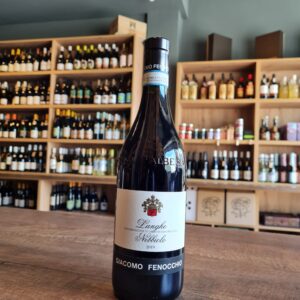 Since 1864, five generations of the Fenocchio family have been producing wine in the heart of Barolo - most of them born in the same yellow house in Monforte d’Alba, at the top of a hillside covered in Nebbiolo grapes. Claudio Fenocchio took upon his father teachings and instead of modernazing the Barolo winemaking techniques, he and with the support of his brothers decided to keep the tradition and build on it. Fenocchio has not taken up organic or biodynamic farming methods but, on the other hand, the estate never took to chemical fertilisers or herbicides, so diverse ground cover and natural predators protect the vines, which grow at their own pace. And in the winery, fermentation is similarly driven by nature and the local microflora. Technically, Claudio has found a way of producing wines which have approachable fruit when young, yet built around a strong tannic structure which does not overwhelm early on, but encourages the development of the wine over years. It is partly due to some green harvesting and careful selection, partly due to enzymatic reaction (ironically) during the long fermentation, which melds the fruit and tannin seamlessly. Barolos are aged for five months in stainless Slovenian oak and a further year in the bottle before release. steel, two years in Slovenian oak and a further year in the bottle before release. More than defining itself as traditional or modern Barolo, Giacomo Fenocchio wine is an expression of terroir.
Since 1864, five generations of the Fenocchio family have been producing wine in the heart of Barolo - most of them born in the same yellow house in Monforte d’Alba, at the top of a hillside covered in Nebbiolo grapes. Claudio Fenocchio took upon his father teachings and instead of modernazing the Barolo winemaking techniques, he and with the support of his brothers decided to keep the tradition and build on it. Fenocchio has not taken up organic or biodynamic farming methods but, on the other hand, the estate never took to chemical fertilisers or herbicides, so diverse ground cover and natural predators protect the vines, which grow at their own pace. And in the winery, fermentation is similarly driven by nature and the local microflora. Technically, Claudio has found a way of producing wines which have approachable fruit when young, yet built around a strong tannic structure which does not overwhelm early on, but encourages the development of the wine over years. It is partly due to some green harvesting and careful selection, partly due to enzymatic reaction (ironically) during the long fermentation, which melds the fruit and tannin seamlessly. Barolos are aged for five months in stainless Slovenian oak and a further year in the bottle before release. steel, two years in Slovenian oak and a further year in the bottle before release. More than defining itself as traditional or modern Barolo, Giacomo Fenocchio wine is an expression of terroir. -
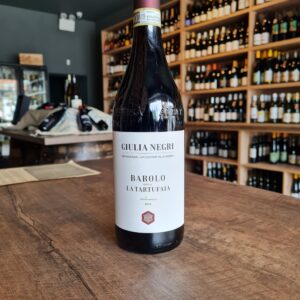 Giulia Negri is a young talent that goes by the nickname "Barolo girl" in the wine world. The grapes for this archetype of a modern-traditional Barolo come from the top vineyards Brunate and Serradenari, the latter is located at an altitude of up to 520 m, and the soils are clayey-sandy. It is an area with a particularly cool and breezy microclimate, which is reflected in the elegant profile of the wines. Climbing towards the top of the hill, the soils become increasingly rich in sandy veins and limestone marl, which contribute to giving Barolo an extreme expressive refinement. The high quality grapes, a work in the cellar that is very respectful of the raw material and aimed at enhancing the typical characteristics of the terroir, allow the creation of a Barolo faithful to the land of origin. Dressed to impress, savory red with a fine fragrance on the palate that doesn't deny its origin and the grape variety, it is of an almost unique elegance and freshness that allows it to be identified as a lively and completely complete top wine even when young. Further years of maturity are certainly not a mistake, because one feels impressively how the complexity increasing with the age joins the finesse and elegance already unmistakable today. One bottle for now and don't put the rest too far away in the cellar, please!
Giulia Negri is a young talent that goes by the nickname "Barolo girl" in the wine world. The grapes for this archetype of a modern-traditional Barolo come from the top vineyards Brunate and Serradenari, the latter is located at an altitude of up to 520 m, and the soils are clayey-sandy. It is an area with a particularly cool and breezy microclimate, which is reflected in the elegant profile of the wines. Climbing towards the top of the hill, the soils become increasingly rich in sandy veins and limestone marl, which contribute to giving Barolo an extreme expressive refinement. The high quality grapes, a work in the cellar that is very respectful of the raw material and aimed at enhancing the typical characteristics of the terroir, allow the creation of a Barolo faithful to the land of origin. Dressed to impress, savory red with a fine fragrance on the palate that doesn't deny its origin and the grape variety, it is of an almost unique elegance and freshness that allows it to be identified as a lively and completely complete top wine even when young. Further years of maturity are certainly not a mistake, because one feels impressively how the complexity increasing with the age joins the finesse and elegance already unmistakable today. One bottle for now and don't put the rest too far away in the cellar, please! -
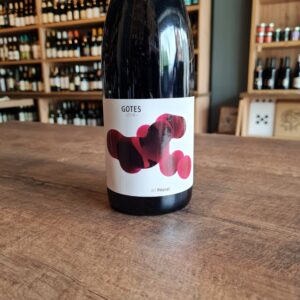 Gotes was the last to be incorporated into the Portal del Priorat's wine family, the Alfredo Arribas project in this denomination, and was envisioned to highlight the freshness of Priorat wines; gotes (drops) of freshness, like dewdrops. Don't expect to find in Gotes the more usual Priorat typicity, with profound maturity and intense minerality. Gotes reflects another type of Priorat wine, refined, in the French style (we mean 'French' as in Burgundy), with a fresh and floral profile. The typicity of Gotes is rooted in the countryside, in its notes of aromatic plants, and in that delightful warmth, because although fresh it is Mediterranean. Another special feature of Gotes is the polish and attention to detail it emits; it's an elegant wine; it has clearly been crafted by experts. If Gotes is refined on the nose, it's positively explosive on the palate! It grows and grows, with lots of volume and a very seductive sweetness and velvety texture. Gotes is fruit, but a very varied fruit cocktail: red fruits, black fruits, both fresh and jammy, the odd juicy stone fruit like mango (the Garnacha always leaves its mark) and fresh grapes that provide a citrusy touch. Ideal with dishes of a upper middle power taste. Will be excellent with a salad of figs and duck ham with Parmesan shavings. It will also be great taking with red meats, duck breast grilled or thigh kid with cider and soft alioli.
Gotes was the last to be incorporated into the Portal del Priorat's wine family, the Alfredo Arribas project in this denomination, and was envisioned to highlight the freshness of Priorat wines; gotes (drops) of freshness, like dewdrops. Don't expect to find in Gotes the more usual Priorat typicity, with profound maturity and intense minerality. Gotes reflects another type of Priorat wine, refined, in the French style (we mean 'French' as in Burgundy), with a fresh and floral profile. The typicity of Gotes is rooted in the countryside, in its notes of aromatic plants, and in that delightful warmth, because although fresh it is Mediterranean. Another special feature of Gotes is the polish and attention to detail it emits; it's an elegant wine; it has clearly been crafted by experts. If Gotes is refined on the nose, it's positively explosive on the palate! It grows and grows, with lots of volume and a very seductive sweetness and velvety texture. Gotes is fruit, but a very varied fruit cocktail: red fruits, black fruits, both fresh and jammy, the odd juicy stone fruit like mango (the Garnacha always leaves its mark) and fresh grapes that provide a citrusy touch. Ideal with dishes of a upper middle power taste. Will be excellent with a salad of figs and duck ham with Parmesan shavings. It will also be great taking with red meats, duck breast grilled or thigh kid with cider and soft alioli. -
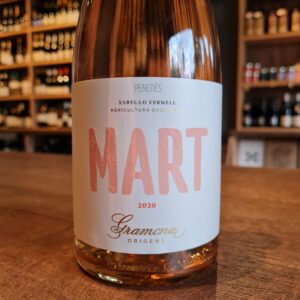 Biodynamic Rosé made from pink skinned Xarel.lo – a variety indigenous to the Penedès region that has been brought back from the brink of extinction. Mediterranean fruits and herbs. Delicate and complex. Recommended spicy dishes such as those found in Japanese, Nikkei, Caribbean and South American cuisine. Rice dishes and seafood. Excellent for aperitifs.
Biodynamic Rosé made from pink skinned Xarel.lo – a variety indigenous to the Penedès region that has been brought back from the brink of extinction. Mediterranean fruits and herbs. Delicate and complex. Recommended spicy dishes such as those found in Japanese, Nikkei, Caribbean and South American cuisine. Rice dishes and seafood. Excellent for aperitifs. -
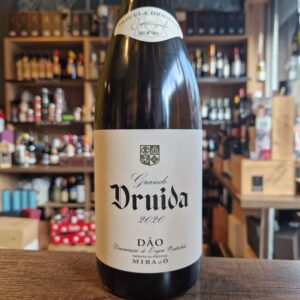 Nuno Mira do Ó is a one-man viticulture and enology powerhouse. A deep-thinking, well-traveled, generous person totally focused on expressing the great terroir of his native country. His peers look his way for guidance because his experience bringing forth wines of place covers almost every major wine region in Portugal. He launched his eponymous brand in the Dão wine region with Druida Encruzado. The wine is named for the ancient Celtic druids whose connection to the earth and plants drove their quest to achieve spiritual equilibrium through the balance of nature. As an enologist and viticulturist, Nuno is in constant search for balance between the soil, the climate, and the vines. Mira do Ó wines seek to attain perfect sensory balance with the utmost respect for nature. This is a pursuit driven by passion and a desire to share wines filled with freshness, elegance, and aging potential. These wines are handcrafted in the Dão from indigenous varietals with vineyards in granite soil sitting above 500 meters of elevation to capture the region’s cool climate. Store the bottles lying down in a cool place (15-17ºC). Drink at 11-12º C and pair with fine food.
Nuno Mira do Ó is a one-man viticulture and enology powerhouse. A deep-thinking, well-traveled, generous person totally focused on expressing the great terroir of his native country. His peers look his way for guidance because his experience bringing forth wines of place covers almost every major wine region in Portugal. He launched his eponymous brand in the Dão wine region with Druida Encruzado. The wine is named for the ancient Celtic druids whose connection to the earth and plants drove their quest to achieve spiritual equilibrium through the balance of nature. As an enologist and viticulturist, Nuno is in constant search for balance between the soil, the climate, and the vines. Mira do Ó wines seek to attain perfect sensory balance with the utmost respect for nature. This is a pursuit driven by passion and a desire to share wines filled with freshness, elegance, and aging potential. These wines are handcrafted in the Dão from indigenous varietals with vineyards in granite soil sitting above 500 meters of elevation to capture the region’s cool climate. Store the bottles lying down in a cool place (15-17ºC). Drink at 11-12º C and pair with fine food. -
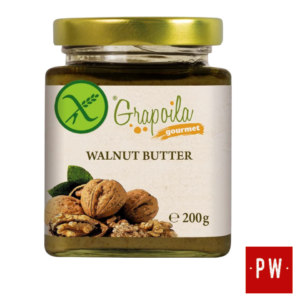 Grapoila uses Zero Waste production meaning, that all created by-products are used for further purposes, nothing goes to waste. Gourmet seed butters are created after settling and filtering the cold-pressed oils, without the use of any additives, preservatives, colouring agents. Due to the gentle process of cold-pressing they fully preserve the valuable ingredients of the high-quality seeds. Its cold-pressed oil content is high and it also contains the fine microparts of the seeds. Almond butter is rich in unsaturated fatty acids, Vitamin E and other antioxidant ingredients. It is a good source of fibre and minerals like potassium, magnesium, calcium, as well as in cholin, that support certain functions of the nervous system. Almond butter is a versatile gourmet food with the natural taste of the raw almonds. It can be used for making creams, fillings, sauces, pastry doughs, or simply adding to shakes and smoothies.
Grapoila uses Zero Waste production meaning, that all created by-products are used for further purposes, nothing goes to waste. Gourmet seed butters are created after settling and filtering the cold-pressed oils, without the use of any additives, preservatives, colouring agents. Due to the gentle process of cold-pressing they fully preserve the valuable ingredients of the high-quality seeds. Its cold-pressed oil content is high and it also contains the fine microparts of the seeds. Almond butter is rich in unsaturated fatty acids, Vitamin E and other antioxidant ingredients. It is a good source of fibre and minerals like potassium, magnesium, calcium, as well as in cholin, that support certain functions of the nervous system. Almond butter is a versatile gourmet food with the natural taste of the raw almonds. It can be used for making creams, fillings, sauces, pastry doughs, or simply adding to shakes and smoothies. -
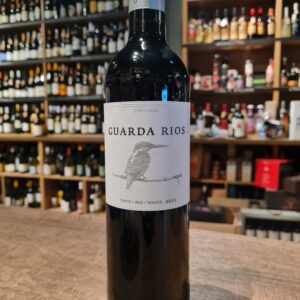 The first Guarda Rios harvest was done in 2006 and, curiously, not in the Alentejo. This wine is associated to the Winemaker and Director of Monte da Ravasqueira, who, in 2012, brought the Guarda Rios with him. Like the birds, this wine migrated and settled next to the dams on a property in Arraiolois, where it found the ideal terroir in which to express all its exuberance and vivacity. The family currently owns 45 hectares under vine in the Alentejo Plains. The highlight of this vineyard is that there are close to 8 diverse soil types and 29 carefully selected plots here. Therefore, it is great for growing quite a few full-bodied grape varietals. The vines are grown at an average height of about 270m above sea level. The Alentejo Plains cover almost one-third of Portugal, and are home to various soil types such as clay, sandy, marble, granite, limestone, shale and more. Thanks to the hot & dry Mediterranean climate in this area, it is ideal for growing some of the rare & indigenous varietals. The native reds grown here are Aragonez, Trincadeira and Alicante Bouschet. Roupeiro, Arinto and Antao Vaz are the native whites grown here. All of these are grown in organized regions along Alentejo. The main regions of the plains where the vines are grown with utmost care & dedication are Borba, Redondo, Reguengos and Evora. These regions are divided based on their climate, soil quality and their ability to create full-bodied & aromatic grapes.
The first Guarda Rios harvest was done in 2006 and, curiously, not in the Alentejo. This wine is associated to the Winemaker and Director of Monte da Ravasqueira, who, in 2012, brought the Guarda Rios with him. Like the birds, this wine migrated and settled next to the dams on a property in Arraiolois, where it found the ideal terroir in which to express all its exuberance and vivacity. The family currently owns 45 hectares under vine in the Alentejo Plains. The highlight of this vineyard is that there are close to 8 diverse soil types and 29 carefully selected plots here. Therefore, it is great for growing quite a few full-bodied grape varietals. The vines are grown at an average height of about 270m above sea level. The Alentejo Plains cover almost one-third of Portugal, and are home to various soil types such as clay, sandy, marble, granite, limestone, shale and more. Thanks to the hot & dry Mediterranean climate in this area, it is ideal for growing some of the rare & indigenous varietals. The native reds grown here are Aragonez, Trincadeira and Alicante Bouschet. Roupeiro, Arinto and Antao Vaz are the native whites grown here. All of these are grown in organized regions along Alentejo. The main regions of the plains where the vines are grown with utmost care & dedication are Borba, Redondo, Reguengos and Evora. These regions are divided based on their climate, soil quality and their ability to create full-bodied & aromatic grapes. -
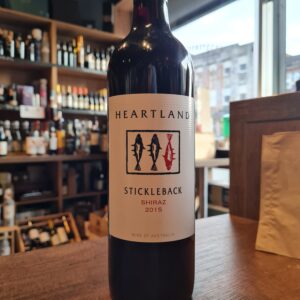 The first Glaetzers settled in the Barossa Valley in 1888 after emigrating from Brandenburg, Germany. The family left Germany on board the Nord-Deutscher Lloyd steamer “Habsburg” and took seven weeks to reach their final destination of Port Adelaide. From here they settled in a country town called Nuriootpa in the Barossa Valley where they started their new life in Australia. The family were some of the earliest recorded viticulturalists in the Barossa Valley and Clare Valley. Barossa Vintners was the first of its kind to conceive as a state-of-the-art winemaking facility with the capacity to make wines, for a core group of top end producers whose fame and demand had grown beyond their winemaking capacities. Completed in 1995, Barossa Vintners has been developed make wines in the most natural possible way. The natural slope of the land allows the winery to be gravity fed and avoid harsh pumping of the grapes and juice. The solar panels allow them to minimize carbon footprint and keep the power bills down. Ben Glaetzer makes wines for his family brand plus Mitolo in McLaren Vale and the Heartland wines from Langhorne Creek. Stickleback is Heartland's entry-level red. Perfect for an evening in front of the chimney , Party , Picknick or a barbecue. Pair it with hearty dishes , spicy food
The first Glaetzers settled in the Barossa Valley in 1888 after emigrating from Brandenburg, Germany. The family left Germany on board the Nord-Deutscher Lloyd steamer “Habsburg” and took seven weeks to reach their final destination of Port Adelaide. From here they settled in a country town called Nuriootpa in the Barossa Valley where they started their new life in Australia. The family were some of the earliest recorded viticulturalists in the Barossa Valley and Clare Valley. Barossa Vintners was the first of its kind to conceive as a state-of-the-art winemaking facility with the capacity to make wines, for a core group of top end producers whose fame and demand had grown beyond their winemaking capacities. Completed in 1995, Barossa Vintners has been developed make wines in the most natural possible way. The natural slope of the land allows the winery to be gravity fed and avoid harsh pumping of the grapes and juice. The solar panels allow them to minimize carbon footprint and keep the power bills down. Ben Glaetzer makes wines for his family brand plus Mitolo in McLaren Vale and the Heartland wines from Langhorne Creek. Stickleback is Heartland's entry-level red. Perfect for an evening in front of the chimney , Party , Picknick or a barbecue. Pair it with hearty dishes , spicy food


